A Study of Customer Preference Transmission for New Energy Vehicles Based on a Signaling Game and Separating Equilibrium
Abstract
:1. Introduction
2. Literature Review
3. Problem Description and Model Construction
4. Related Assumptions
5. Model Solving Process
6. Comparative Analysis
7. Conclusions
7.1. Main Findings
7.2. Limitations and Implications
Author Contributions
Funding
Institutional Review Board Statement
Informed Consent Statement
Data Availability Statement
Conflicts of Interest
References
- Wang, N.; Tang, G. A review on environmental efficiency evaluation of new energy vehicles using life cycle analysis. Sustainability 2022, 14, 3371. [Google Scholar] [CrossRef]
- Sgarbossa, F.; Arena, S.; Tang, O.; Peron, M. Renewable hydrogen supply chains: A planning matrix and an agenda for future research. Int. J. Prod. Econ. 2023, 255, 108674. [Google Scholar] [CrossRef]
- Gurz, M.; Baltacioglu, E.; Hames, Y.; Kaya, K. The meeting of hydrogen and automotive: A review. Int. J. Hydrogen Energy 2017, 42, 23334–23346. [Google Scholar] [CrossRef]
- He, W.; Hao, X. Competition and welfare effects of introducing new products into the new energy vehicle market: Empirical evidence from Tesla’s entry into the Chinese market. Transp. Res. Part A Policy Pract. 2023, 174, 103730. [Google Scholar] [CrossRef]
- Cirillo, C.; Liu, Y.; Maness, M.A. Time-dependent stated preference approach to measuring vehicle type preferences and market elasticity of conventional and green vehicles. Transp. Res. Part A Policy Pract. 2017, 100, 294–310. [Google Scholar] [CrossRef]
- Ma, J.; Bao, B.S.; Liu, L.; Wang, X. Dynamic game evolution complexity of new energy and fuel vehicle manufacturers under carbon cap-and-trade policy. Manag. Decis. Econ. 2024. [CrossRef]
- Kim, J.; Seung, H.; Lee, J.; Ahn, J. Asymmetric preference and loss aversion for electric vehicles: The reference-dependent choice model capturing different preference directions. Energy Econ. 2020, 86, 104666. [Google Scholar] [CrossRef]
- Cordera, R.; dell’Olio, L.; Ibeas, A.; Ortúzar, J.D.D. Demand for environmentally friendly vehicles: A review and new evidence. Int. J. Sustain. Transp. 2019, 13, 210–223. [Google Scholar] [CrossRef]
- Li, Y.Y.; Song, F.H.; Liu, Y.; Wang, Y. Cognitive preference performance of in-vehicle human–Machine interface icons under female new energy vehicles. Sustainability 2022, 14, 14759. [Google Scholar] [CrossRef]
- Lin, Z.Z.; Zhai, W.M.; Li, S.S.; Li, X. Evaluating the impact of the center control touch screen of new energy vehicles on user visual imagery and preferences. Displays 2023, 78, 102435. [Google Scholar] [CrossRef]
- Jung, J.; Yeo, S.; Lee, Y.; Moon, S.; Lee, D.J. Factors affecting consumers’ preferences for electric vehicle: A Korean case. Res. Transp. Bus. Manag. 2021, 41, 100666. [Google Scholar] [CrossRef]
- Papantoniou, P.; Mylonas, C.; Spanou, P.; Pavlou, D. Investigation of User’s Preferences on Electric Passenger Cars. In Proceedings of the 6th Conference on Sustainable Urban Mobility (CSUM)—Smart Energy for Smart Transport, Karditsa, Greece, 31 August–2 September 2022; pp. 104–114. [Google Scholar]
- Swain, T.A.; Snyder, S.W.; McGwin, G.; Huisingh, C.E.; Seder, T.; Owsley, C. Older drivers’ attitudes and preferences about instrument cluster designs in vehicles revealed by the dashboard questionnaire. Cogn. Technol. Work. 2023, 25, 65–74. [Google Scholar] [CrossRef] [PubMed]
- Cai, M.S.; Ge, B.F.; Dou, Y.J.; Huang, G.; Du, Y.H. PURA: A product-and-user oriented approach for requirement analysis from online reviews. IEEE Syst. J. 2022, 16, 566–577. [Google Scholar] [CrossRef]
- Wang, X.G.; Cheng, Y.; Lv, T.; Cai, R.J. Fuel vehicles or new energy vehicles? A study on the differentiation of vehicle consumer demand based on online reviews. Mark. Intell. Plan. 2023, 42, 1236–1251. [Google Scholar] [CrossRef]
- Gary, C.; Ismael, R.L. Personal lies. Econ. Lett. 2024, 235, 111496. [Google Scholar]
- Jiang, Y.; Wu, Q.; Li, M.; Gu, Y.; Yang, J. What is affecting the popularity of new energy vehicles? A systematic review based on the public perspective. Sustainability 2023, 15, 13471. [Google Scholar] [CrossRef]
- Spence, M. Job market signaling. Q. J. Econ. 1973, 87, 355–374. [Google Scholar] [CrossRef]
- von Hippel, E. Lead users: A source of novel product concepts. Manag. Sci. 1986, 32, 791–805. [Google Scholar] [CrossRef]
- Globocnik, D.; Faullant, R. Do lead users cooperate with manufacturers in innovation? Investigating the missing link between lead userness and cooperation initiation with manufacturers. Technovation 2021, 100, 102187. [Google Scholar] [CrossRef]
- Axtell, C.M.; Holman, D.J.; Unsworth, K.L.; Wall, T.D.; Waterson, P.E.; Harrington, E. Shopfloor innovation: Facilitating the suggestion and implementation of ideas. J. Occup. Organ. 2000, 73, 265–285. [Google Scholar] [CrossRef]
- Frese, M.; Teng, E.; Wijnen, C.J. Helping to improve suggestion systems: Predictors of making suggestions in companies. J. Organ. Behav. 1999, 20, 1139–1155. [Google Scholar] [CrossRef]
- Xiong, J.; Chen, X.; Tian, Y.; Ma, R.; Chen, L.; Yao, Z. MAIM: A novel incentive mechanism based on multi-attribute user selection in mobile crowdsensing. IEEE Access 2018, 6, 65384–65396. [Google Scholar]
- Zeynep, D.N.; Basil, G.E.; Aard, J.G.; Efthymios, C. Innovating with the customer: Co-creation motives in online communities. Int. J. Electron. Commer. 2023, 27, 523–557. [Google Scholar]
- Simaei, A.; Hirschheim, R.; Schneider, H. Idea crowdsourcing platforms for new product development: A study of idea quality and the number of submitted ideas. Decis. Support Syst. 2023, 175, 114041. [Google Scholar] [CrossRef]
- Horng, S.M. A study of active and passive user participation in virtual communities. J. Electron. Commer. Res. 2016, 17, 289–311. [Google Scholar]
- Plotkina, D.; Munzel, A.; Pallud, J. Illusions of truth-Experimental insights into human and algorithmic detections of fake online reviews. J. Bus. Res. 2020, 109, 511–523. [Google Scholar] [CrossRef]
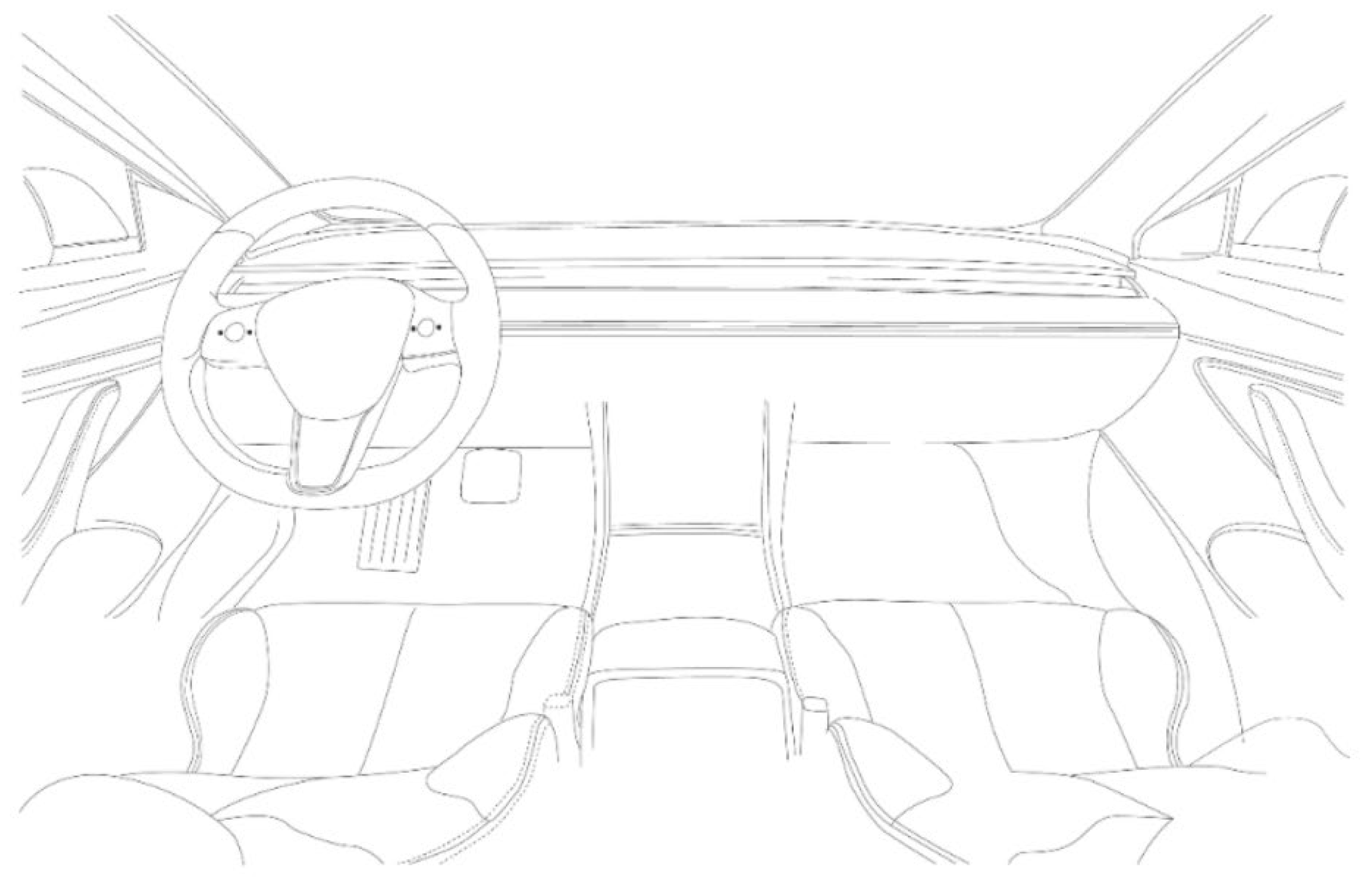

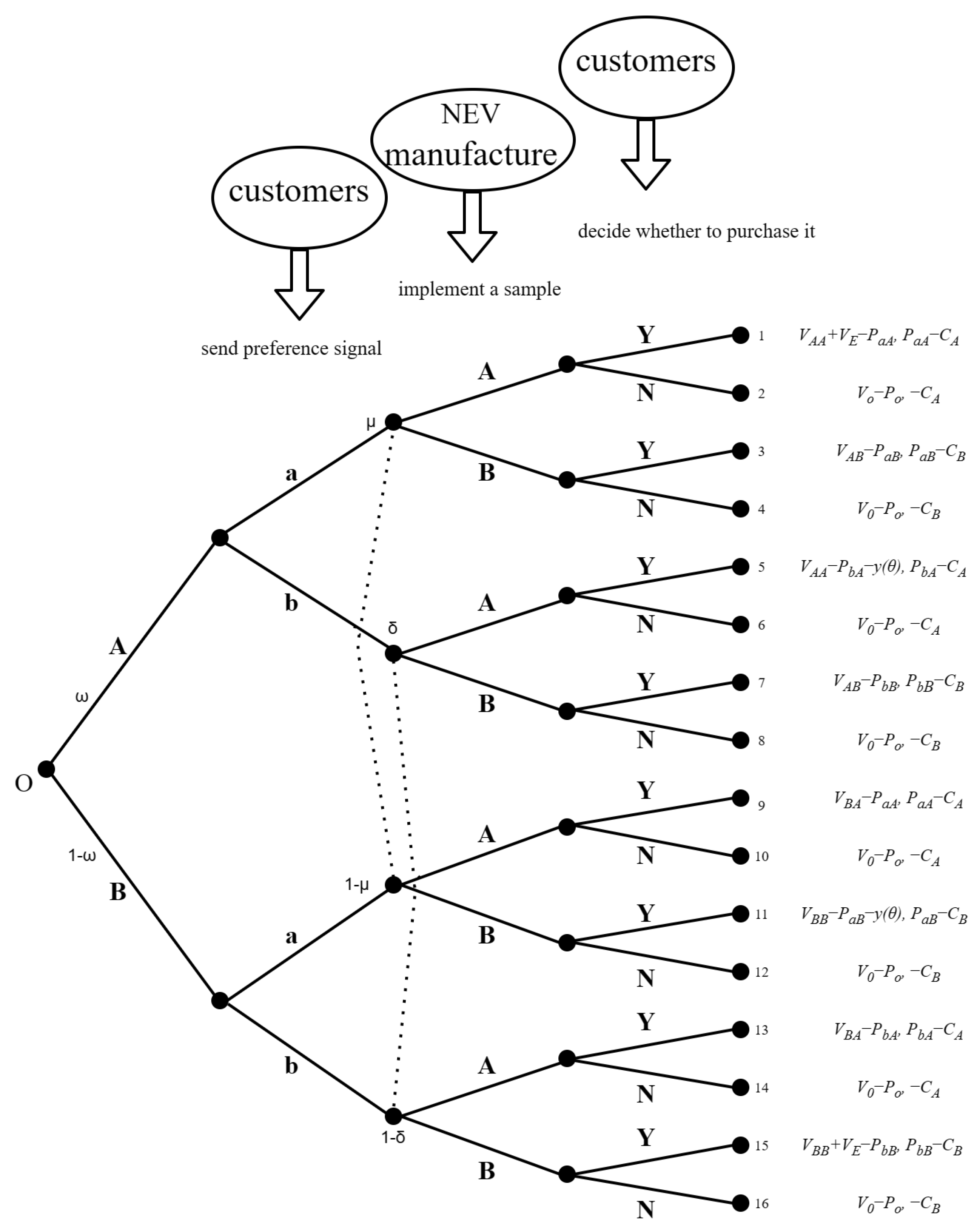
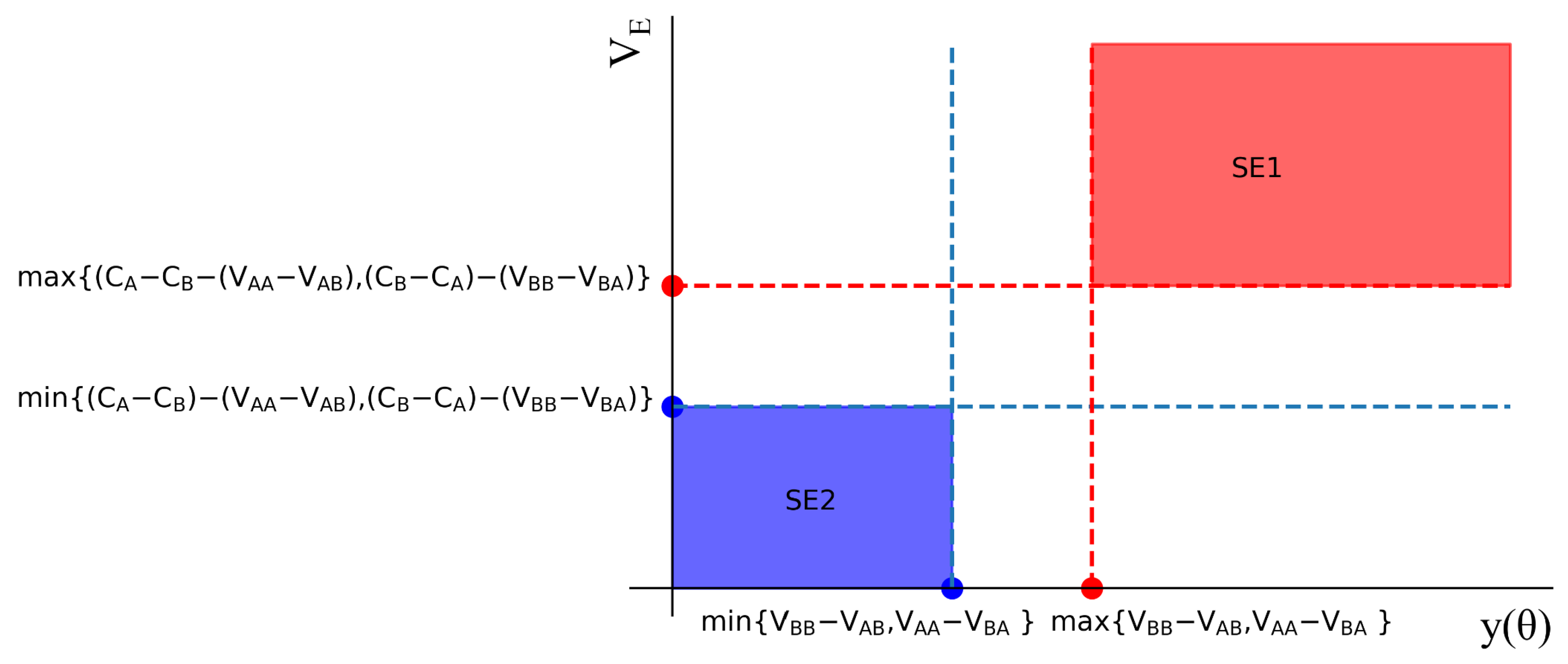
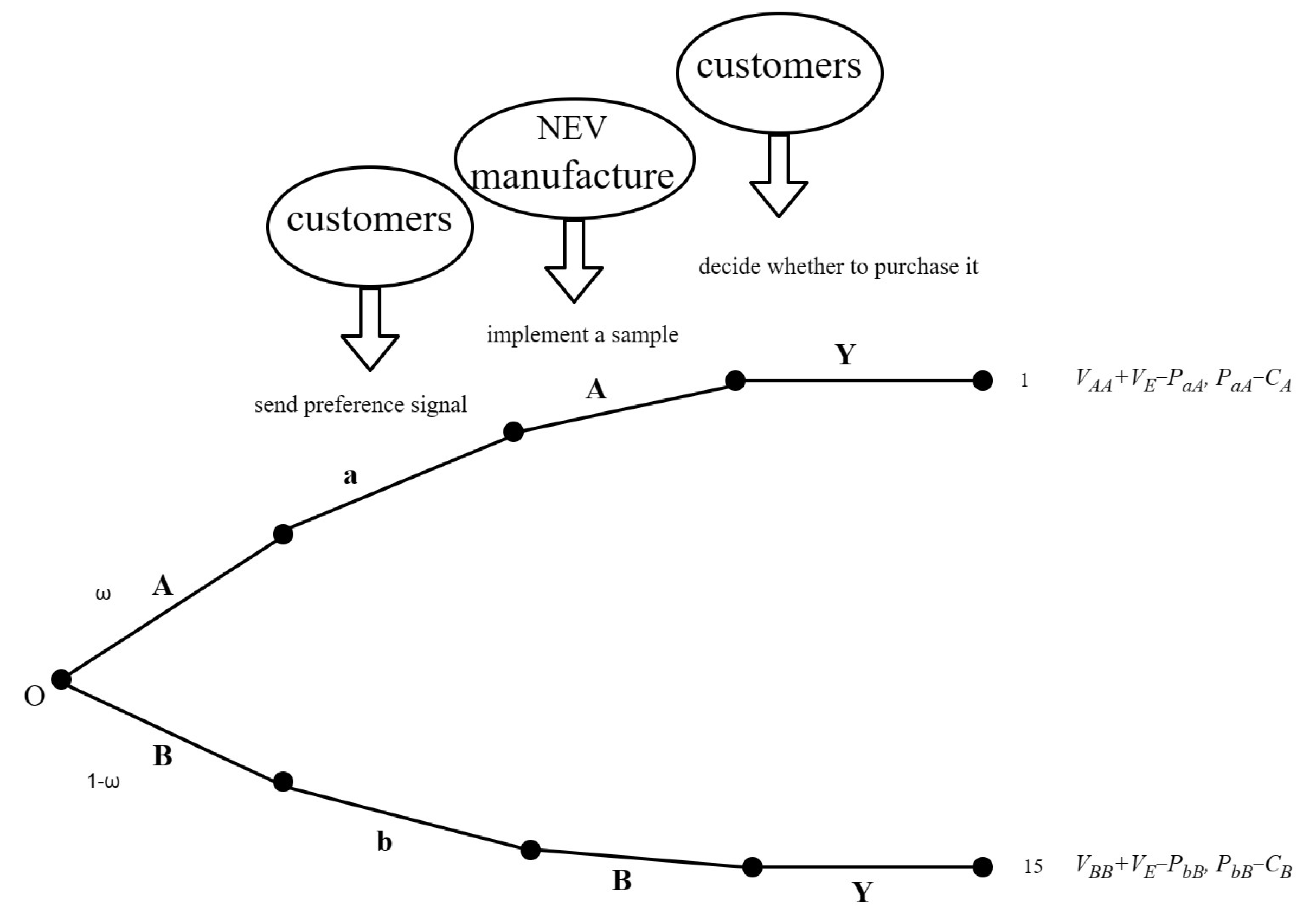

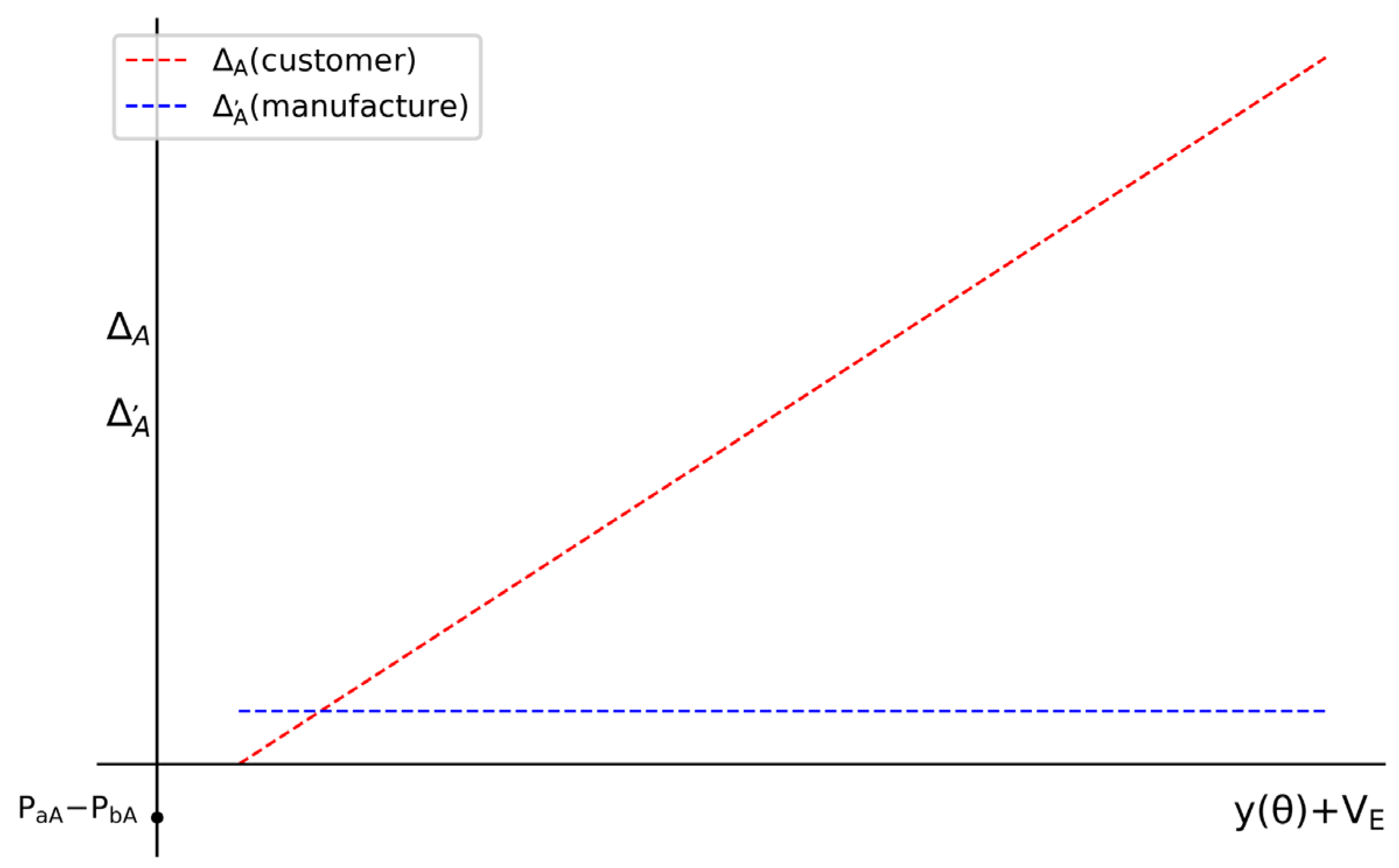
 |  |
| Sample A | Sample B |
| Notation | Description |
|---|---|
| ω | The probability of the preference for sample A under natural circumstances |
| μ | The probability of the preference for sample B under natural circumstances |
| a or b | The preference signal ‘a’ or ‘b’ sent by the customers |
| A or B | The sample A or B of the CCTS |
| Y or N | The customers decide whether to purchase (Y) the new NEV or not (N) when it is launched. |
| The perceived value of the new CCTS when the customers prefer sample ‘A’ and eventually purchase the new NEV with sample ‘A’ being adopted. | |
| The perceived value of the new CCTS when the customers prefer sample ‘A’ and eventually purchase the new NEV with sample ‘B’ being adopted. | |
| The perceived value of the new CCTS when the customers prefer sample ‘B’ and eventually purchase the new NEV with sample ‘B’ being adopted. | |
| The perceived value of the new CCTS when the customers prefer sample ‘B’ and eventually purchase the new NEV with sample ‘A’ being adopted. | |
| When the customers send the real preference signal in the early stage and finally purchase the corresponding new NEV, the customers obtain psychological value through the realization of their expectations of the new NEV, represented by . | |
| The original value of the new NEV | |
| The original price of the new NEV | |
| The manufacturing cost of the new NEV with sample ‘A’ being adopted. | |
| The manufacturing cost of the new NEV with sample ‘B’ being adopted. | |
| The price of the new NEV with sample ‘A’ being adopted; the customers send a preference signal ‘a’ beforehand. | |
| The price of the new NEV with sample ‘B’ being adopted; the customers send a preference signal ‘a’ beforehand. | |
| The price of the new NEV with sample ‘A’ being adopted; the customers send a preference signal ‘b’ beforehand. | |
| The price of new NEV with sample ‘B’ being adopted; the customers send a preference signal ‘b’ beforehand. | |
| The probability of different customer behavior strategies when the customers’ private preferences are sample ‘A’ | |
| The probability of different customer behavior strategies when the customers’ private preferences are sample ‘B’ | |
| The probability of different manufacturer behavior strategies when it receives signal ‘a’ | |
| The probability of different manufacturer behavior strategies when it receives signal ‘b’ |
| The Customers Decide Whether to Purchase the New NEV | Y | N | |
|---|---|---|---|
| The Manufacturer Decides Which Sample to Be Adopted | |||
| A | ( | () | |
| B | ( | () | |
| The Customers Decide Whether to Purchase the New NEV | Y | N | |
|---|---|---|---|
| The Manufacturer Decides Which Sample to Be Adopted | |||
| A | ( | () | |
| B | ( | () | |
| The Customers Decide Whether to Purchase the New NEV | Y | N | |
|---|---|---|---|
| The Manufacturer Decides Which Sample to Be Adopted | |||
| A | ( | ||
| B | ( | ||
| The Customers Decide Whether to Purchase the New NEV | Y | N | |
|---|---|---|---|
| The Manufacturer Decides Which Sample to Be Adopted | |||
| A | ( | ||
| B | ( | ||
| Condition | Customers | Manufacturer |
|---|---|---|
| When inequality (1) holds | ||
| When inequality (2) holds |
| Condition | Customers | Manufacturer |
|---|---|---|
| When inequality (1) holds | ||
| When inequality (2) holds |
| Utility Difference | (Customers) | (Manufacturer) | |
|---|---|---|---|
| Private Preference | |||
| A | |||
| B | |||
Disclaimer/Publisher’s Note: The statements, opinions and data contained in all publications are solely those of the individual author(s) and contributor(s) and not of MDPI and/or the editor(s). MDPI and/or the editor(s) disclaim responsibility for any injury to people or property resulting from any ideas, methods, instructions or products referred to in the content. |
© 2024 by the authors. Licensee MDPI, Basel, Switzerland. This article is an open access article distributed under the terms and conditions of the Creative Commons Attribution (CC BY) license (https://creativecommons.org/licenses/by/4.0/).
Share and Cite
Zhang, S.; Du, Y. A Study of Customer Preference Transmission for New Energy Vehicles Based on a Signaling Game and Separating Equilibrium. Sustainability 2024, 16, 3090. https://doi.org/10.3390/su16073090
Zhang S, Du Y. A Study of Customer Preference Transmission for New Energy Vehicles Based on a Signaling Game and Separating Equilibrium. Sustainability. 2024; 16(7):3090. https://doi.org/10.3390/su16073090
Chicago/Turabian StyleZhang, Shuang, and Yueping Du. 2024. "A Study of Customer Preference Transmission for New Energy Vehicles Based on a Signaling Game and Separating Equilibrium" Sustainability 16, no. 7: 3090. https://doi.org/10.3390/su16073090





